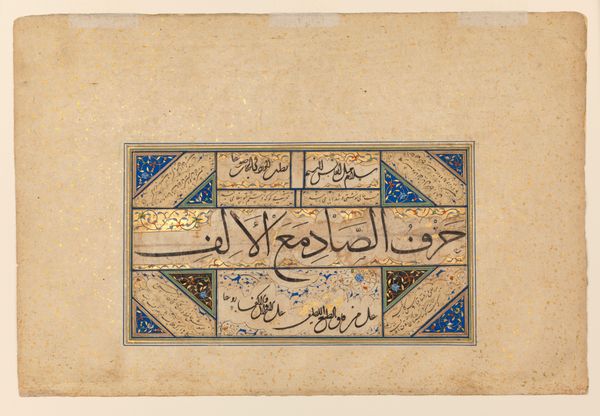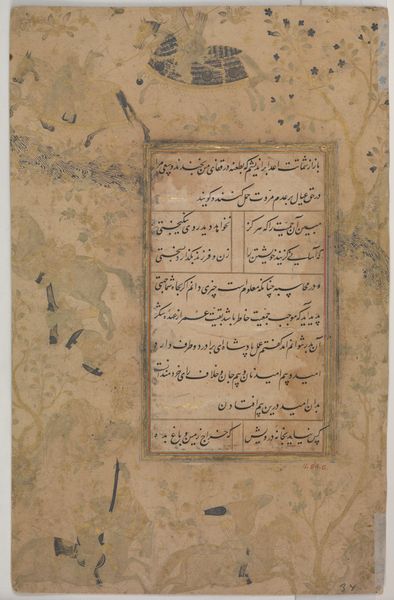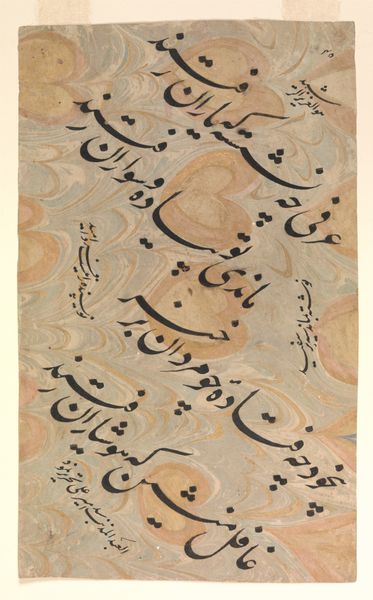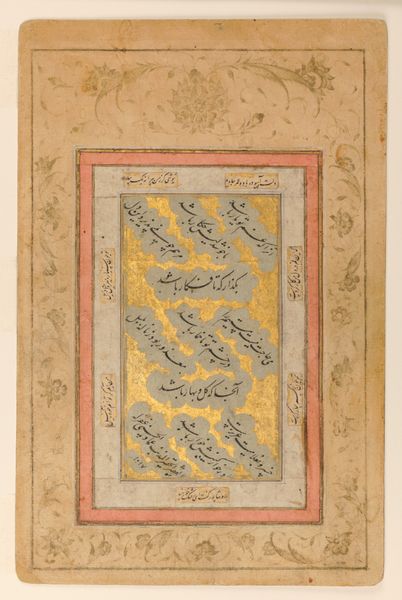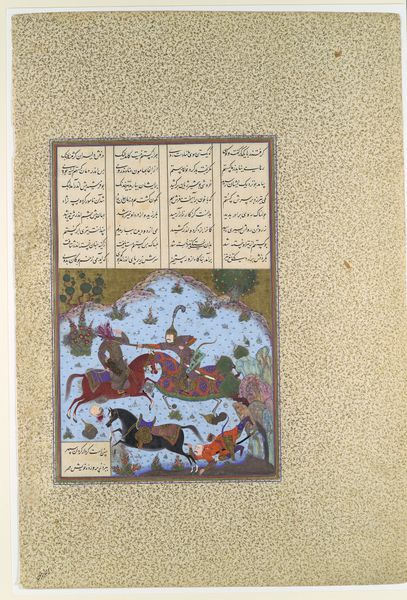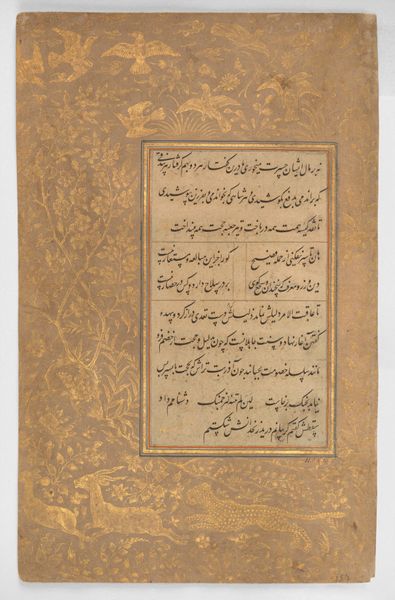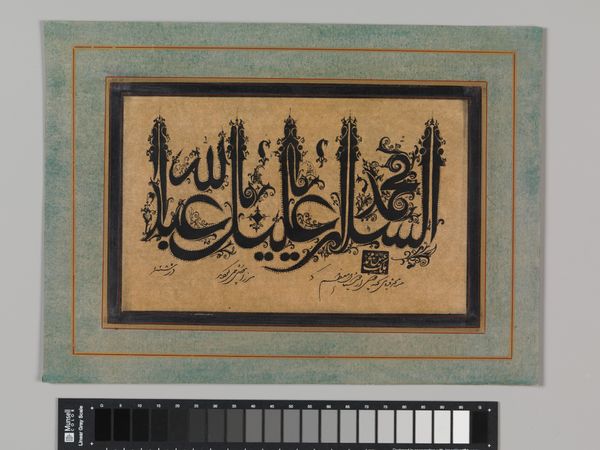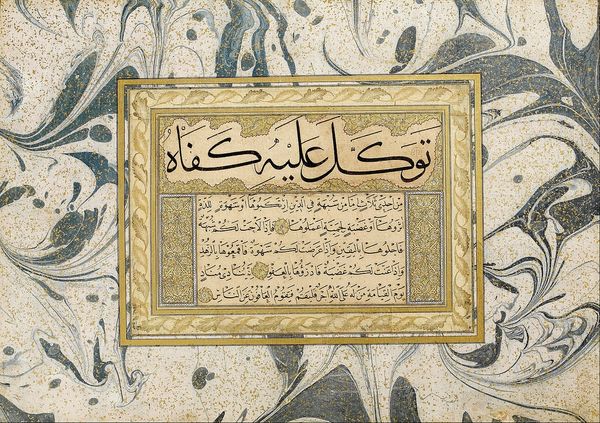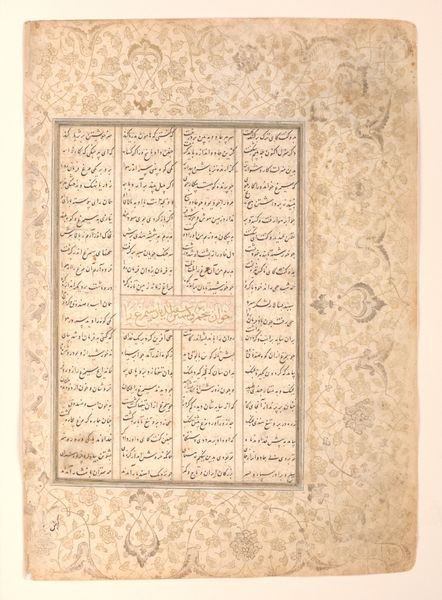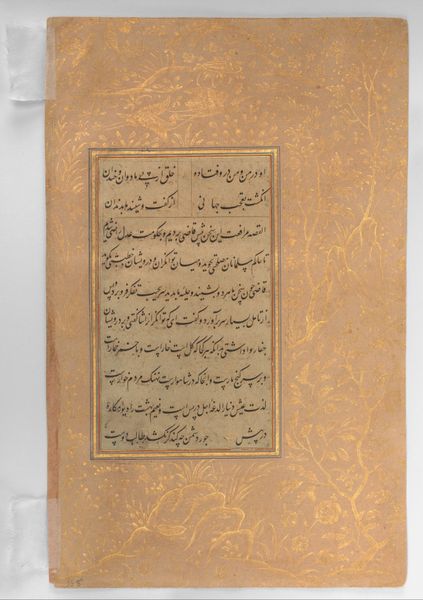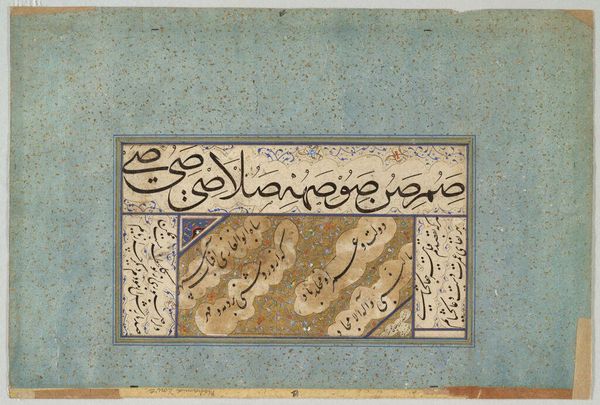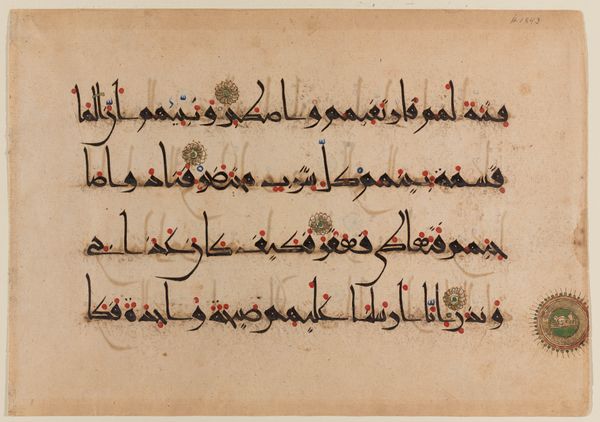
Album Page with Calligraphic Specimen and Animal Border c. late 17th century
0:00
0:00
drawing, paper, watercolor, ink
#
drawing
#
asian-art
#
landscape
#
paper
#
watercolor
#
ink
#
miniature
#
calligraphy
Dimensions: Text panel: 16 × 29.8 cm (6 5/16 × 11 11/16 in.; whole sheet: 22.8 × 36.4 cm (8 7/8 × 14 1/4 in.)
Copyright: Public Domain
Editor: So, this is an Album Page with Calligraphic Specimen and Animal Border, probably from the late 17th century by an unknown Mughal artist, made with ink, watercolor, and drawing on paper. It’s so delicate, almost ethereal! The way the animals seem to dance around the calligraphy is really charming. What's your interpretation of it? Curator: Well, seen through a historical lens, we have to consider the context in which these albums were produced. These weren't just casual doodles; they were carefully crafted objects, often commissioned by members of the Mughal court, symbols of power, refinement and access to knowledge. The placement in the Art Institute today changes the reception quite drastically. Does the inclusion of the animals give a certain cultural perspective? Editor: That's interesting, I hadn’t thought about that aspect of power. What do you mean, ‘cultural perspective’ given the inclusion of the animals? Curator: The animals are not randomly placed, nor indigenous to one region. Think about it. What purpose do you imagine the depiction of both the local fauna and the Arabic scripture serve? Editor: It seems like a way to signal that this ruler or patron has dominion over everything, from the word of God to all living creatures, native or foreign! It would give such a distinct political edge to the artwork’s creation. Curator: Precisely! It tells a clear story about their relationship to the land and its resources, reinforcing a social hierarchy. Displaying such a miniature page was part of creating that image of sophisticated rule. How does knowing this contextual information change your understanding of the piece? Editor: It shifts it completely! I now see it as less decorative, and more politically charged; each delicate brushstroke loaded with meaning about the patronage of such work. Curator: It also reminds us that museums aren’t neutral spaces. Displaying it here also imbues it with our cultural values, even as we try to understand its original intent. Editor: Right! I will definitely not look at these beautiful illuminated works the same again.
Comments
No comments
Be the first to comment and join the conversation on the ultimate creative platform.
